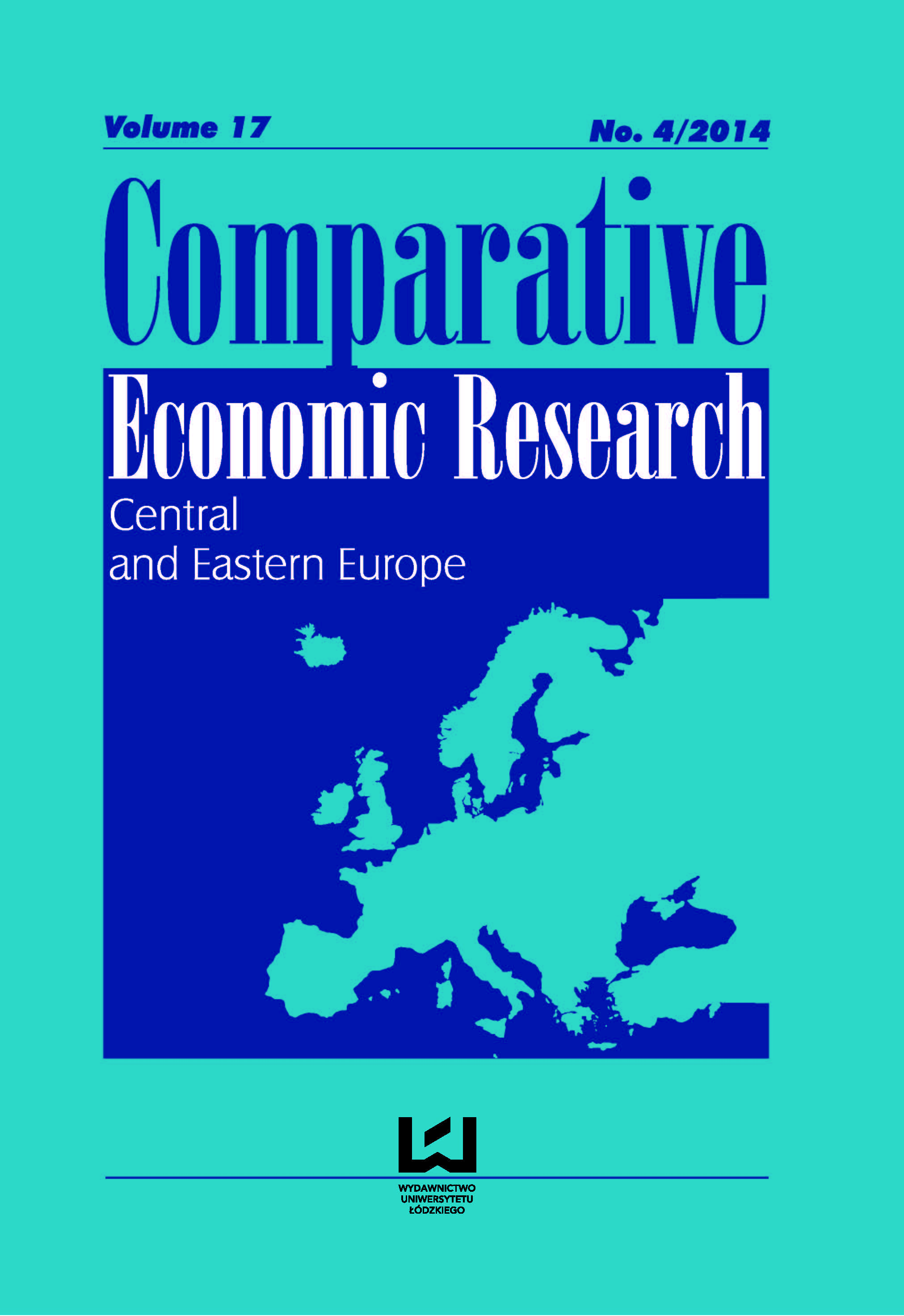The Determinants Of Population Health Spatial Disparities
DOI:
https://doi.org/10.2478/cer-2014-0039Keywords:
Spatial Durbin Model, population health, Local Human Development IndexAbstract
Health of the population is one of the basic factors of social development. The results of empirical studies indicate a number of factors determining the level of health of the population related to access to health care services, the level of environmental pollution and the wealth of society. It must be assumed that the observed disparities in the health depend on distributions of particular determinants. The aim of the article is to assess the significance of the main factors affecting the occurrence of spatial disparities in the level of social development districts NTS-4 in terms of health of the population. The analysis was based on estimates of the Spatial Durbin Model (SDM) which takes into account the impact of neighborhood spatial units on level of dependent variable and the explanatory variables. The size of the level of social development in terms of health of the population in the study was approximate by the aggregate value of the index, which is the local component of the Local Human Development Index LHDI.
Downloads
References
Anselin L. (1988), Spatial Econometrics: Methods and Models, Dordrecht, The Netherlands: Kluwer Academic Publishers.
Google Scholar
Anselin L., Bera A. K., Florax, R. & Yoon, M. J. (1996) Simple diagnostic tests for spatial dependence, ʻRegional Science and Urban Economicsʼ, 26, 77-104.
Google Scholar
Anselin L. (1999), Spatial Econometrics, Bruton Center School of Social Sciences University of Texas at Dallas Richardson, Dallas.Dahlgren, G., Whitehead, M. (2007), European strategies for tackling social inequities in health: Levelling up Part 2, Copenhagen: World Health Organization Regional Office for Europe. Dostępny w: http://www.euro.who.int/__data/assets/pdf_file/0018/103824/E89384.pdf [dostęp 10.05.2014].
Google Scholar
Elhorst J. P. (2010), Applied Spatial Econometrics: Raising the Bar, Spatial Economic Analysis, 5:1, 9-28.
Google Scholar
Lalonde M. (1981), A New Perspective on the Health of Canadians. A working document, Minister of Supply and Services, Canada.
Google Scholar
Manski C. F. (1993), Identification of endogenous social effects: the reflection problem, ʻReview of Economic Studiesʼ, 60, 531-542.
Google Scholar
Suchecki B. (2010), Ekonometria przestrzenna, Metody i modele analizy danych przestrzennych, Wydawnictwo. C.H. Beck, Warszawa.
Google Scholar
Wilkinson R., Marmot M. (eds) (2003), Social determinants of health. The solid facts. World Health Organization, Second edition, Copenhagen.
Google Scholar
World Health Organization. Preamble to the Constitution of the World Health Organization as adopted by the International Health Conference, New York, 19-22 June, 1946; signed on 22 July 1946 by the representatives of 61 States (Official Records of the World Health Organization, no. 2, p. 100) and entered in to force on 7 April 1948.
Google Scholar
United Nations Development Programme (2012), Krajowy Raport o Rozwoju Społecznym. Rozwój regionalny i lokalny 2012, Warszawa.
Google Scholar
http://www.who.int/trade/glossary/story046/en/ [access: 21.05.2013]
Google Scholar
http://www.who.int/hia/evidence/doh/en/index7.html [access: 21.05.2013]
Google Scholar
Downloads
Published
How to Cite
Issue
Section
License

This work is licensed under a Creative Commons Attribution-NonCommercial-NoDerivatives 4.0 International License.











